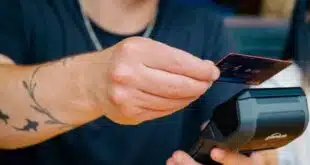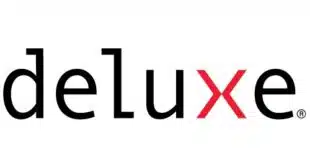The combination of restrictions on in-store visits and concerns about the safety of cash has been a boon for digital payments. But not all agree cash’s reign is over.
Cash is resilient. So are electronic payments.
Cash been around for millennia and exists as paper currency and coins. It also became less used in 2020 as many stores closed to curtail the spread of the Covid-19 virus. And some consumers avoided using cash even in essential stores that remained open.
The result? An increased use of electronic payments both online and in-store. The Covid pandemic has been the spur to get U.S. consumers to readily adopt contactless payments, while more consumers shopped online.
During the worst of the pandemic, cash use declined. Prior to the pandemic, 44% of consumers made less than 25% of their in-person payments with cash and 9% used cash not at all, found the May 2021 Lost in Transactions report from Paysafe Group. During the pandemic, these figures increased to 58% and 14%, respectively.
Now, as the pandemic appears to be waning, only 10% anticipate going completely cashless and 50% will make at least 25% of their transactions using cash.
Here’s what else the pandemic revealed about cash use. In February, 14% of all merchants in a Square Inc. report were cashless, up from 6.3% a year earlier. Square said that, of all the transactions it processed in February, cash accounted for 30.5%, down from 37.4% a year earlier.
A separate report from FIS Inc. found that cash transactions represented 20.5% of global point-of-sale volume in 2020, down from 30.2% in 2019. In North America, cash transactions totaled 11.4% of transactions at the point of sale in 2020, down from 14.6% in 2019. The decline in the use of cash is expected to continue. By 2024, cash transactions at the point-of-sale in North America are expected to total just 8.7%, according to the report.
The big beneficiaries in the drop in cash use have been mobile wallets and prepaid cards, the FIS report said. Mobile-wallet use increased to 9.6% of POS transactions in 2020 from 6% the year before. Prepaid card use accounted for 3.9% of transactions in 2020, a jump from 1.9% in 2019.
“Consumers are more aware of the hygiene concerns with cash due to Covid,” says Melissa Jankowski, FIS senior vice president and division executive for financial institution card and money movement.
‘Selfish Thinking’
Still, the forecasts for cash do not predict anything like zero use.
“In the current financial systems, cash provides an anchor to stability, which is why people make withdrawals,” Jankowski says. “In low-income areas, there are those that feel that cash gives them greater control, and for those living in rural areas oftentimes the infrastructure doesn’t exist to rely on digital payments.”
“In my lifetime, I don’t think [cash] can disappear,” says Austin Mac Nab, chief executive and cofounder of VizyPay LLC, a West Des Moines, Iowa-based independent sales organization that provides a cash-discount program for merchants. “Cash will be around for many years to come.”
Indeed, 19 other nations scored higher than the United States regarding degree of cashless economy, according to a Money.co.uk report released in May. Canada was named the most likely to banish the banknote in exchange for electronic payments, the report says.
In fact, Mac Nab’s company is banking on some consumers choosing to use cash. VizyPay’s cash-discount program lets consumers at participating merchants pay less for merchandise than those choosing a payment card.
“Obviously, I want as many people as possible using electronic payments,” Mac Nab says, “but that would be selfish thinking on my part because business owners should be able to accept any payment.” The merchant and the consumer should have choice in their payments, he adds.
Shopping online—which accounts for 13.6% of all U.S. retail sales, according to the Census Bureau—typically has been challenging for cash users. But some companies, like PayNearMe and London-based Paysafe Group, have developed services to accommodate these consumers. They typically enable consumers to shop online but pay for the purchases in a store where they use cash and receive a code to indicate on the retailer’s Web site that they paid.
Paysafecash launched in the United States in December. Consumers can use one of 60,000 locations to make their cash payment for an online transaction. “Electronic payments are everywhere and growing,” says Jan Marc Kuelper, Paysafe vice president of strategic development. Kuelper oversees Paysafe’s U.S. electronic cash operations. “Especially in Covid, e-commerce has boomed.”
But electronic payments need a credit or debit card, something the unbanked or underbanked likely don’t possess. In 2019, an FDIC survey found that 5.4% of all U.S. households were unbanked.
These are consumers who cannot participate in the electronic-payments economy, Kuelper says. Electronic cash, such as Paysafecash, however, can offer a channel for these consumers, he says. “Electronic cash is not subsidizing electronic payments,” he says. “It’s something like an addition.” Offering e-cash services may help grow the target audience for electronic payments overall.
More Cash, Not Less
Still, not all merchants are onboard with the idea of continuing cash acceptance. “With the pandemic, many merchants pushed their customers to cards instead of cash for sanitary reasons, and some refused to accept cash,” says Thad Peterson, senior analyst at Aite Group, a Boston-based research firm.
“That trend away from cash acceptance will continue,” Peterson adds. “Cash is costly and dirty, and the pandemic gives merchants permission to reduce or eliminate acceptance. The un- and under-banked will be hit disproportionally harder by the shrinkage of cash-acceptance points.”
Others aren’t so sure about that. Cash has a long road ahead, suggests David Tente, executive director of the ATM Industry Association for the United States, Canada, and the Americas. “Some openly talk about the ‘war on cash,’” Tente says in an email message. “But cash may never go away completely.”
While Tente says many have pointed to the pandemic as evidence that electronic payments are taking over, that reasoning “conveniently ignore[s] the fact that consumers in a lockdown are forced to use electronic payments, regardless of their real preference.” There was almost $2.2 trillion in currency in circulation as of June 9, according to the Federal Reserve. That’s up from $2 trillion in June 2020.
“There is more cash in circulation than ever before,” Tente says. “Although the number of ATM withdrawals has been declining recently, the cash dispensed per withdrawal is increasing at an even higher rate, meaning that the value of the cash being withdrawn annually is increasing.”
As to if or when electronic payments might achieve ubiquity of use, like cash, Tente says it already has. “It’s safe to say that electronic payments have achieved ubiquity, in the normal sense of the word, but not to the extent of cash—and [they] never well,” he says. “At least not in the foreseeable future. Use of cash does not require that you have any sort of account with any institution. It doesn’t require equipment, power, or payment rails to work. Cash itself is also a store of value.”
Make It Simple
Jankowski suggests the question about electronic payments isn’t so much about achieving ubiquity, but about answering concerns consumers tend to have when spending with a digital payments device. One such concern is about anonymity, which is related to a worry that their every move is being tracked. Cash grants some immunity from that.
Another concern consumers have about digital payments has to do with the ability to manage their personal finances. “Not all consumers can manage, track, and allocate their spend when placed on an electronic payments solution,” Jankowski says. “The challenges are learning at the end of the month that they have overspent.”
One thing is clear for electronic payment advocates: simpler is better. “Payment acceptors need to make the transaction as simple, fast, and safe as possible to ensure that the new users of digital wallets and payments continue to use the technology post-pandemic,” Peterson says.





